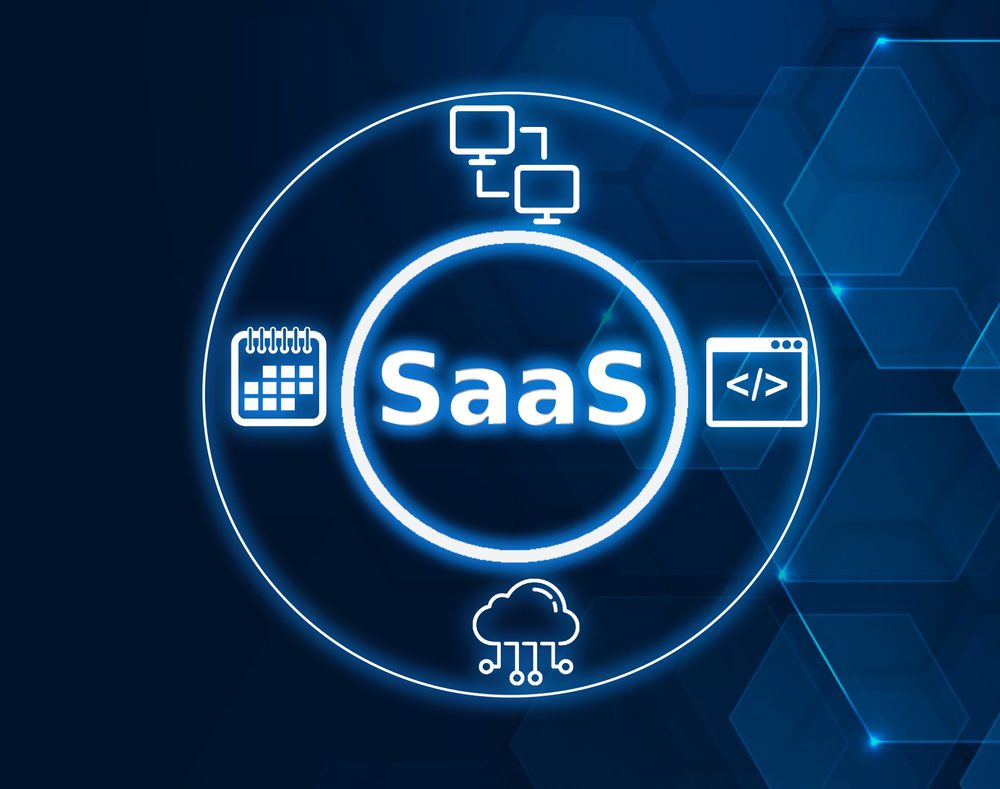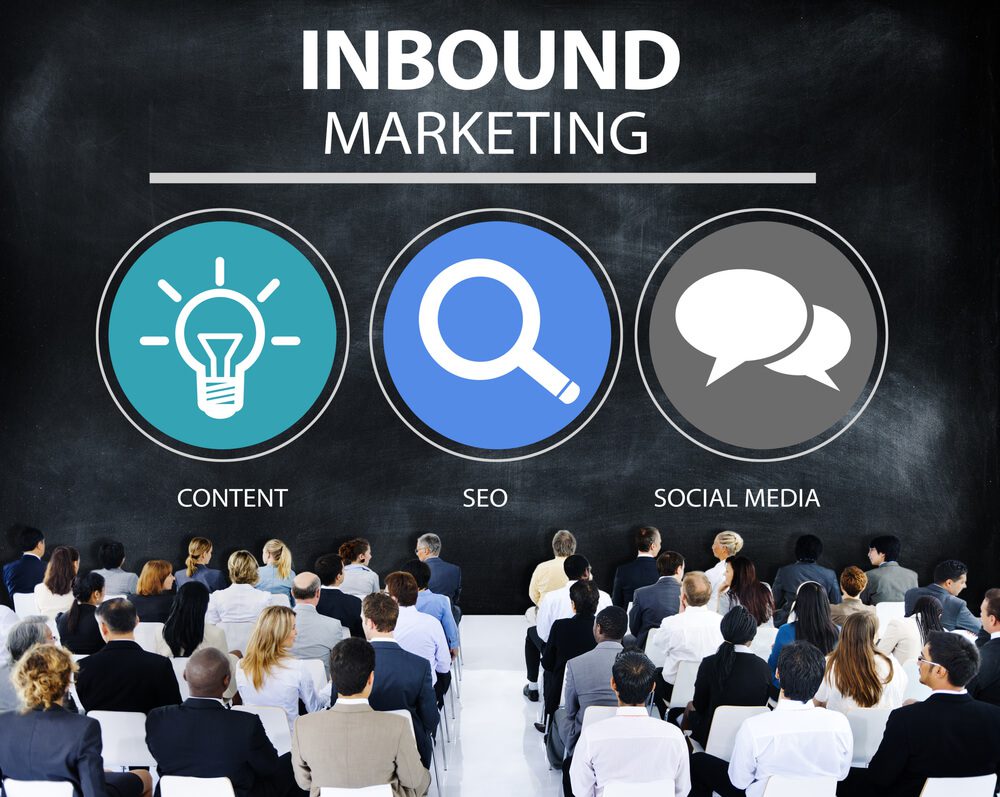
From Obscure to Unmissable: SaaS Inbound Strategies That’ll Skyrocket Your Leads
SaaS brands have responded in an explosive way to the burgeoning demand for robust yet scalable and affordable cloud-based solutions. The market is forecast to grow at a healthy compound annual growth rate (CAGR) of 13.7% to reach $819.23 Billion by 2030, but the rapid expansion has created a fiercely competitive environment.
With an ever-growing number of platforms entering the fray, standing out from rivals and attracting new customers is more challenging than ever. Buyer behaviors have also shifted. In response to this demanding climate, many companies have found that hiring the services of a SaaS Fractional CMO helps them stay on target and competitive.
Decision-makers and buyers now conduct in-depth independent research online before they initiate contact with sales teams. They want to evaluate for themselves solutions that are touted to directly address their key challenges, pain points, and needs rather than being the objects of aggressive pitches.
One of the best ways to put your brand in front of these marketing-qualified leads (MQLs) is through strategic yet organic tactics and channels. Inbound marketing for SaaS is especially important in these situations.
While outbound tactics such as cold calling and display ads can initially deliver sizable results, they are generally abrasive. Inbound marketing for SaaS involves attracting, delighting, and ultimately converting prospects through solution-geared and educational-heavy content, delivering exceptional results in the longer run.
Research shows inbound marketing generates up to three times as many qualified leads as outbound at roughly half the cost. It can also help your SaaS brand build trust and foster longer-term customer relationships that convert.
As you will soon see, marketing for a SaaS company is a complex balance of several important factors. It is also labor intensive. Many companies struggle to keep current with the best tactics and techniques to stay afloat in this competitive space. Hiring a SaaS marketing agency can be a good solution to these concerns.
If you run on a B2B SaaS model,successful inbound marketing is paramount because the buyer’s journey tends to involve more extended contracts, more spending, and a complex decision-making cycle. With good knowledge of SaaS SEO tips, you will be well-positioned to get more prospects into the sales funnel and nurture MQLs throughout their journey.
This guide gives you tried-and-true strategies to use in your inbound marketing for SaaS lead-generation success. It covers:
- Creating a compelling content strategy that inspires action
- Using social media to drive leads and generate sales
- How to use lead magnets to generate high-quality MQLs
- Using email marketing to generate leads, nurture relationships, and close deals
- Optimizing your inbound marketing for SaaS with customer feedback
- Analyzing and refining your inbound strategy
The Anatomy of Effective Inbound Marketing for SaaS Brands

Inbound marketing for SaaS brands encompasses a strategic process that attracts prospects with content that creates positive digital experiences, provides value, and addresses challenges. It is one of the strongest methods for converting prospects into subscribers or purchasers.
Whereas traditional outbound tactics may disturb and interrupt, inbound marketing helps your brand connect and delight your target audience.
At its core, this marketing strategy focuses on attracting prospective customers to your tailored content. You don’t look for inbound MQLs; they come to your brand.
Inbound leads may have found your brand through your podcast, white papers, social media posts, or blog. They have likely read through your educational content as part of conducting research long before they are ready to purchase.
Inbound campaigns are wholly centered around your target audience. They should:
- Provide solutions to the problems your target audience faces
- Address target audience concerns and frustrations
- Give relevant and helpful information
- Offer follow-up support when the lead has converted
The Attract stage of inbound marketing for SaaS companies involves positioning your brand as a thought leader through B2B SaaS SEO ideas such as educational webinars, ebooks, and blogs. These assets should be geared toward solving your prospects’ most pressing pain points and challenges.
Converting, Closing, and Delighting
After you have attracted prospects, the next moves are directed towards converting them into MQLs, closing them as customers, and continuing to delight them in order to boost retention. This multi-prong approach to marketing is well-suited to deliver top-grade MQLs and maximize customer long-time value (LTV) for SaaS brands.
The Convert phase is for cultivating your MQLs along their buyer’s journey through a blend of tactics and content. Forms, calls-to-action, and tailored landing pages are all pieces of this puzzle. Case studies and demo videos showcase strengths. E-courses and guides delve deeper into customer solutions. The combined package helps move leads further in the sales funnel.
These elements alone will not close your sales. One more factor is also highly important for achieving success. Closing your MQLs calls for alignment between your marketing and sales teams.
Sales teams armed with MQL profiles should hold insightful consultative conversations focused on business objectives rather than just product features. Trial offers and ROI calculators help justify the investment of time spent to decision-makers.
Case studies and demo videos showcase the real impact of your SaaS product, while e-courses and guides delve deeper into solutions.
Closing your MQLs — turning them into purchases or subscriptions — calls for alignment between your SaaS marketing and sales teams. More specifically, the marketing department provides the sales team with in-depth MQL profiles to use when engaging clients during consultative conversations focused on business objectives rather than just product features.
Working together, the marketing and sales teams can create tailored trial offers and ROI calculators. These will help your marketers justify the investment in your SaaS products, especially when talking with decision-makers.
Delighting Your Customer: The Cornerstone of SaaS Inbound Marketing
Delighting your customers is the central purpose of SaaS inbound marketing. When you delight your prospects and existing customers through ongoing engagement and value reinforcement, you are working to boost retention and reduce churn.
Delighting also helps turn customers into brand ambassadors and product promoters, so you stay on top of word-of-mouth and referral marketing. Of course, you need to put in time and effort through a band of strategies to make this work worthwhile.
The most vital inputs are surveys and smart content. Post-purchase surveys, in particular, provide insights you can use to fine-tune your product and customer experience.
You can use feedback loops to generate smart user-inspired or generated content, including reviews and testimonials. That’s because use-generated content can lend more loyalty, affinity, and awareness to your brand, as noted by Forbes Magazine.
Feature customer success stories in your email campaigns, or post them on your company’s website, blog, and social media channels. They demonstrate to existing customers how their peers have achieved meaningful results, thus helping to build confidence in your product and foster a sense of community.
Loyalty programs can also delight customers and drive retention by rewarding customer longevity.
Exclusive content, early access to new features, and discounted renewal rates are other viable ways to delight your customers. Together with ROI calculators and case studies, they reinforce the value customers receive from your SaaS product through targeted content that keeps your relationship top-of-mind.
An effective inbound marketing for SaaS strategy prioritizes long-term customer relationships and optimizes LTV over quick, one-off transactions. When executed by a top SaaS marketing agency, it can reliably skyrocket organic leads and seals the deal for sales success.
Crafting a Compelling Content Strategy That Inspires Action

Understanding Buyer Personas
Tailored content is at the heart of any effective inbound marketing strategy for SaaS MQL growth. Models of ideal customers looking for your software solutions will serve as the guideposts for your content strategy.
Target audiences will likely find value in different types of content. End users will likely want to watch tutorials and read blogs, while buyers might prefer case studies and white papers. Most decision-makers will lean more heavily towards reports, ROI, and content, siding on the financial and legal side of the deal.
However you look at it, an effective content strategy must address specific buyer personas. Each distinct group will place more value on your SaaS solution when your company makes an effort to present information and tutorials in the manner most appreciated by that group. .
Your goal is to develop buyer personas based on the five types of SaaS decision makers: the initiator, the buyer, the decision maker, the influencer, and the end user. Buyer personas help humanize abstract and complex market segments, ensuring your content is tailored to resonate well across all touchpoints in the buyer’s journey.
The first step is to conduct thorough market research in order to analyze the goals, pain points, and demographics of your ideal customer. When this information is compiled and indexed in multiple categories, it becomes far easier to perform the next critical step: accurately segmenting your audience.
It also pays to give strong consideration to the ways your target audiences consume information. What formats work best for each group?
Finally, unify and organize your buyer persona data and specify the best formats to use for each type of audience. Then you can enrich their profiles with secondary information like contact details.
Leveraging SEO for Organic Reach
Keywords form the cornerstone of all sensible B2B SaaS SEO strategies, regardless of the target market. Knowing how and where to find the most relevant keywords is paramount to the ability to efficiently forge a direct line to prospects.
The best keywords for SaaS SEO marketing will mesh well with the buyer's journey and search intent while also taking advantage of Latent Semantic Indexing (LSI). LSI works by identifying conceptual relationships and patterns between user queries and relevant keywords even when the exact search terms are not used.
Focusing on LSI keywords at each stage of the funnel, from early research to purchase, and incorporating related long-tail keywords can help rank content for a wider range of relevant searches.
At its core, keyword research helps you pinpoint the terms and phrases that will bring more organic web traffic. They help your content feel more tailored and authentic.
Keyword research is the foundation of any lead-generation effort. Carefully analyze queries related to your target audience’s most pressing pain points, problems, and challenges. To achieve the greatest effectiveness, use that information to inform your search terms.
According to Business Insider, well-established platforms like SEMrush and Ahrefs can make light work of your keyword research. They provide keyword trends, difficulty, and volume, helping to stretch your organic reach.
Creating Value-Driven Blog Posts
As SaaS Fractional CMO experts would point out, a well-crafted content strategy should incorporate both promotional and educational content. However, most SaaS marketers tend to favor either informational or promotional content while putting the other less favored term on the back burner.
They often struggle to strike a balance and juggle between the two content types, hoping that one will resonate with their target audiences. Both informational and promotional content takes effort and time to fine-tune. The task is never completely done, however. As customer needs and wants change, so will the type of content that clients prefer.
The best plan is to achieve a balanced mix of both. Educational content will help establish your brand as a thought leader; promotional content tends to move leads along the sales funnel.
Your aim is to engage and educate your target audience with how-tos, problem-solving posts, case studies, and checklists. Pick topics that solve your customers’ common problems and answer their most pressing questions.
Use promotional posts to showcase new features, success stories, and major events such as launchers. Interviews and analytics can address topics related to customers’ most pressing concerns.
HubSpot recommends sharing your blog content across multiple platforms such as social media, your website, and email so that you cast your net to catch the widest audience. HubSpot also recommends placing more emphasis on your blogs, website because they will likely appeal to the most and greatest variety of people.
Utilizing Webinars and Tutorials
When it comes to inbound marketing for SaaS, interactive content formats such as video tutorials and webinars are ideal for demonstrating software capabilities first-hand. Webinars, in particular, tend to generate plenty of interest.
The honor is on you if you successfully craft the messaging to position your tutorials and webinars as valuable learning opportunities for your target audience. Live, well organized webinars are exceptional platforms for building rapport. Recordings of them will extend their shelf life and reach.
Put your webinars to work to build a community around your SaaS brand and showcase subject matter experts to nurture trust. As noted by Entrepreneur, you can use webinars as a reputational tool, sharing testimonials from happy customers and their candid reviews.
Tutorials provide hands-on product exposure for potential customers to experience pain point solutions. When strategically promoted, both tutorials and webinars are lead-generation powerhouses.
Harnessing the Power of Social Media

Platform Selection
Social media is a crucial channel for inbound marketing for SaaS companies to engage your potential leads and beyond. Using SaaS Fractional CMO tips like influencer collaboration and sharing user-generated content can help start conversations about your brand and engage your niche audience.
However, not all social platforms are equally effective for all your buyer personas. They cater to different demographics and use cases, so your job is to analyze on which networks your target audience is most active.
LinkedIn tends to be the premier social network for B2B lead generation. Its professional user base of over 930 million provides a rich pool of potential customers for SaaS companies.
Tailor your LinkedIn content to this audience by highlighting case studies, thought leadership, and industry insights most relevant to your buyers.
Another SaaS heavyweight, X (formerly known as Twitter) is well-suited for pushing your updates and raising brand awareness. Maintain a consistent posting cadence with a mix of promotional content and industry commentary. Don’t forget to use relevant hashtags to expand your reach!
Facebook Groups and forums can help small SaaS firms and startups carve out a niche for themselves. They are an ideal place to rally some buzz around your SaaS brand in the build-up to product launches and fundraising rounds.
Engage in discussions and provide value through your expertise. Over time, as trust is built, you will be well-positioned to organically introduce your product solutions when the time is right.
The key is to select the right social platforms and optimize your approach for each, based on your target customer and goals. With the right strategy, social media can be hugely effective in generating qualified SaaS leads.
Engaging Over Selling
Modern SaaS buyers are ideal inbound leads. They are generally averse to abrasive marketing tactics and would push back when presented with aggressive sales tactics.
Although social media can provide a great channel for direct pitching and promoting of your solutions, selling too overtly can come across as pushy or inauthentic to these sophisticated buyers. That is why you must focus your social media market efforts more heavily on engagement.
Use influencers, thought leaders and social tools to interact with potential customers and provide value. This will help you build brand awareness and trust over time.
Remember, you must remain active in industry discussions and online communities to demonstrate your expertise and position your brand as a thought leader. Answer questions, share relevant content, and make insightful comments without overtly pitching your product.
Your entire strategy should be geared toward your target audience without the expectation of immediate sales. Consider running contests or hosting virtual events; they are superb engaging tactics for community building.
Ask questions to spark discussion, whether in groups, via polls or doing an X Q&A. Foster genuine connections through personalized outreach (e.g., thank you notes after demos or free trials).
Consistent interaction helps qualify leads as invested prospects ready for a sales pitch. Track social profiles of contacts from trials or demos to strengthen relationships further through relevant responses. Automate some follow-ups but always personalize where possible.
Lead Magnets & Conversion Optimized Strategies

The Art of Crafting Compelling Lead Magnets
Lead generation is the lifeblood of any SaaS brand, which is why crafting killer lead magnets that attract and convert high-quality MQLs is so important. To make the most splash with these special deals and free assets, they should address your customers’ pain points and position your solution as the obvious answer.
A solid lead magnet must provide real value for your MQLs. It should grab prospect’s attention and encourage them to engage with your brand
Types of Lead Magnets to Focus On
Ebooks are a perennial favorite because they provide substantive value without much commitment. For SaaS, focus ebooks on common challenges or questions that your product solves, use case studies and data to illustrate ROI.
Ebooks are an excellent way to share valuable information in a format that is shareable, easy to read, and shelveable. Focus on the topics that appeal the most to your prospective customers, educating them on best practices.
Closely related to eBooks, white papers are uniquely equipped to help you dive deeply into industry best practices and trends. Analyze your target audience’s research process to determine where in the buyer’s journey, whitepapers would most likely be discovered and shared.
Free trials are a staple of the SaaS industry and, if properly structured, could be highly convertible. Consider offering short subscriptions with limited but workable functionality, a lengthy trial period with full function, and gated content to nurture interest over time.
If you are in a SaaS niche where standardization could save your leads time, templates can be a no-brainer. Provide an easily customizable template but demonstrate your solution's capabilities.
Making Your Lead Magnets Irresistible
The best lead magnets share some common features:
- Focus is on the target audience. Magnets should provide unique insight, solve a challenge, or save your MQLs time.
- Establish or reaffirm your brand’s credibility. Your lead magnets should mirror your reputation, expertise, and thought leadership.
- Easy to share with social sharing buttons. Shareability creates buzz, which in turn, generates engagement and broadens your reach.
Regardless of format, your magnets must quickly solve real problems. Interview customers to gain an understanding of their frustrations, then design an offer for them entirely based on providing relief from those problems.
Use benefits-driven headlines and language to keep the focus on customer outcomes. Provide social proof and reviews to build trust. Ask for qualified contact information right away with an offer to start a dialogue.
Optimizing Landing Pages for Conversion
When crafting landing pages specifically designed to generate leads for SaaS companies, the overarching goal is to optimize the user experience for conversion. Landing pages should clearly communicate your value proposition and make it as easy as possible for visitors to take the next step, whether that is downloading a whitepaper, signing up for a trial, or contacting a sales representative. This is a powerful element of inbound marketing for SaaS companies.
One of the most effective best practices is to use clear, compelling calls-to-action placed above the fold. Be direct about what you want visitors to do, such as "Download Your Free Trial" or "Get Your Custom Quote Today."
It is wise to keep the content concise and focused on addressing the visitors' pain points. Highlight specifically how your SaaS solution can help the visitor without overwhelming them with too many details.
It is also important to incorporate trust signals that establish your credibility and reassure visitors. This could include case studies, client logos, industry awards, or certifications.
Testimonials can be very persuasive. You can even do simple things such as prominently including your phone number to make the visitor feel more comfortable about taking the next step.
Continual testing and optimization are also key. Use analytics to see which pages are most effective at converting visitors into leads.
Analyze open and click-through rates to refine your value proposition messaging. Track conversions to optimize for qualified leads who are most likely to become customers.
Use A/B testing to refine elements such as headlines, calls-to-action buttons, and content focus areas. For example, you may find that emphasizing a specific feature or benefit most often moves the needle for your target personas.
Email Marketing – Nurturing and Beyond

Segmentation and Personalization
Email segmentation and personalization can make all the difference when you want to run any inbound marketing for a SaaS campaign. With the right segmentation approach, you can tailor your messaging to resonate more deeply with different audiences.
The first step is to break down your email list into meaningful segments. For SaaS companies, common segments include trial users, paid customers, free users, and prospects at different stages of the sales funnel.
Your buyer personas can come in handy here. Analyze your user data to group contacts based on attributes such as usage patterns, purchase history, demographic information, and website behavior.
With your segments defined, the next step is testing different content approaches for each. For example, trial users may respond best to educational content that highlights key features, while paid customers might show the most appreciation for tips demonstrating advanced functionality.
Run A/B tests on subject lines, preheaders, calls-to-action, and email copy tailored for different segments. Continually refine your segmentation strategy based on open and click-through rates to keep your inbound marketing for SaaS email efforts engaging and appealing.
Engaging Drip Campaigns
You need well-designed automated drip campaigns to move prospects further down the sales funnel in a non-intrusive way.
Segmenting your list is one of the best ways to do this, especially based on crucial parameters such as what content is read and website browsing behavior. In this way, over time, you uncover how to serve the most relevant messages to each subscriber.
You would be better served to start new subscribers with introductory emails highlighting top features or use cases. Make sure to include social proof like case studies or testimonials to build trust.
A best practice for your next move is to focus subsequent messages on educating subscribers with how-to guides, checklists, or tip sheets related to your SaaS solution. Mix in promotional content judiciously to gently encourage trial users to subscribe as paying customers.
Re-Engaging Dormant Subscribers
To re-engage dormant subscribers, personalized emails work best. Look at their last interactions with your vertical and craft a message addressing any questions or needs indicated there.
You could also send targeted communications focused on major product updates or new features most relevant to that subscriber's past behaviors. The key is to demonstrate that you remember and still want to support them through their buyer’s journey.
Integrating Feedback Loops
Inbound marketing for SaaS brands is not a one-and-done tactic. User feedback takes center stage, helping you optimize your inbound strategies over time.
When you listen to your prospects and existing customers, you will better understand their desired features, pain points, and how to enhance the overall user experience. Whether you need help with SaaS Homepage tips or content overhaul, this level of insight drives your marketing efforts so that they become hyper-targeted to individual buyer persona needs and challenges.
Begin by setting up active and passive feedback channels. Take surveys after new features or trial period launches to collect qualitative feedback.
Use analytics tools such as Google Analytics to passively track where visitors spend time on your site and what content resonates most. More importantly, you should integrate platforms such as UserTesting or Validately, which allow unmoderated usability tests on core functions.
Analyzing and Refining Your Inbound Strategy

Metrics to Monitor
Inbound marketing for SaaS success is an ongoing process. You must track key KPIs to continually fine-tune your inbound approach if you would like to achieve optimal results.
Make sure to monitor and measure the following metrics thoroughly:
- Traffic sources - This metric assesses where your leads are coming from, be they your drip email campaigns, social media, or white papers.
- Conversion rates - Track conversions at each touchpoint in the buyer’s journey and sales funnel, helping you to see what is working and to identify drop-off points.
- Lead quality metrics include demographic info, firmographics or intent, which can reveal your ideal buyer persona.
Don’t forget to analyze lead response times, which tell you how quickly sales follow-up affects deal-closing rates.
Iterative Improvement
Analyzing content KPIs around top-performing pages or assets will show you what your buyers engage with most. Social metrics on shares, comments and followers will tell you plenty about your community growth.
You must review and analyze these metrics at least quarterly, if not monthly or on a rolling basis, to allow for data-driven optimization. When you maintain a test-and-learn mindset, you will keep your inbound marketing for SaaS strategy fresh and tailored to your buyers' evolving needs.
Summing Up
Inbound marketing for SaaS digital strategy is a powerful tool to help your brand attract, engage, and convert leads. The key is to create valuable content, harness the power of social media, and nurture leads with email marketing.
When you make good use of irresistible lead magnets and conversion-optimized strategies, your SaaS brand can generate high-quality MQLs and boost sales. However, the SaaS marketing landscape is fast-changing, so it’s crucial to innovate and adapt your inbound strategies continuously.
The most effective methods include experimenting with new content formats, using social media to reach new audiences, and engaging drip campaigns to bring dormant subscribers back to the fold.
Those who embrace constant improvement through inbound marketing for SaaS will cement their position as market leaders for the long term.
Want To Meet Our Expert Team?
Book a meeting directly here




